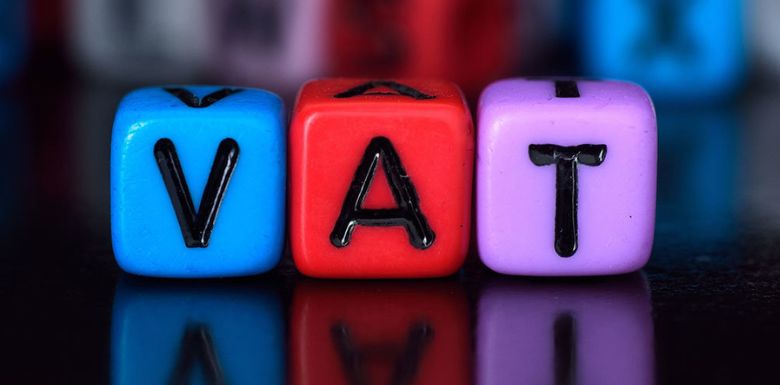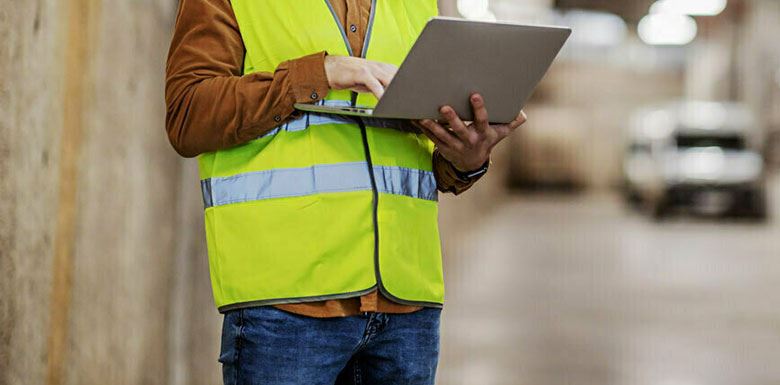Should I be VAT registered?
 In this article
In this article
When setting up your own business, whether or not you have to pay VAT is dependent on numerous factors, including how much your business turns over in a given year – meaning there are many small businesses paying tax out there that could avoid paying VAT altogether on their services.
Of course, whether or not you pay VAT for your business is not a simple choice, and there are both advantages of being VAT registered and benefits of not being VAT registered that you’ll need to consider.
So, to help you better understand this topic and make your VAT registration decision easier, we’ve broken down what you need to know about the process in our VAT registration guide.
Should I be registered for VAT as a business?
When considering your business overheads, it’s safe to assume that one of the factors you’ll need to consider is VAT costs. And while it is true that some businesses have no choice about registering to pay VAT, if your business turns over less than £85,000 during a consecutive 12-month period, you won't actually be required to register.
Naturally, this is not always something that larger businesses can predict, but for small businesses and sole traders, it's very possible to earn below this threshold consistently and not have to pay VAT.
How do I know if I should be VAT registered?
Given that the threshold you need to meet before registering for VAT is based on financial turnover, not profit – i.e., your total sales – it’s best to keep a running total of your sales each month so you can monitor this figure. That way, you can see and predict whether or not you will surpass the VAT threshold during this period so you can register in time.
When should I register for VAT?
Should your business turnover surpass £85,000, you have until the end of the following month to register for VAT, giving you a reasonable grace period to complete the process. Alternatively, if you believe that your turnover will exceed the threshold during any 30-day period, you should register immediately.
Why register for VAT
If you’re looking at your finances and have safely calculated that you won’t need to pay VAT, you might be tempted to not register in order to save money. However, you should first work out whether the benefits of being VAT registered outweigh the disadvantages for your business:
What are the advantages of being VAT registered?
Despite VAT registration coming with costs, there are a number of excellent benefits that come with voluntary VAT registration. For example, it helps to create a good impression with both clients and other companies, as certain companies, insurers, lenders, suppliers or clients don’t like to deal with non-VAT registered companies due to risk.
On top of this, you can actually reclaim VAT charges on goods and services you buy as a business, and any other VAT they're charged by other businesses, which is known as input tax.
Essentially, you offset this VAT payment against the amount of VAT you charge on your goods and services (the output tax) in your VAT returns. If you pay more input tax than you receive output tax, you can reclaim the difference from HMRC.
Essentially, you offset this VAT payment against the amount of VAT you charge on your goods and services (the output tax) in your VAT returns. If you pay more input tax than you receive output tax, you can reclaim the difference from HMRC.
In other words, being VAT registered could be financially beneficial if you’re investing in tools, machinery, business premises, or work vehicles – big-ticket items that may incur a substantial input tax that you can then claim back.
What are the disadvantages of registering for VAT?
Even though you can offset certain business costs by being VAT-registered, there are some natural downsides to being voluntarily registered, the biggest of which is the increased costs for your customers.
Simply put, VAT registration means you have to charge your customers VAT, raising the overall price of your goods and services. Now, if your customers are also VAT registered, this will make little difference to them, as they can reclaim the VAT in turn.
However, if they are the end user, such as a member of the public or a smaller non-VAT-registered company, then you will become a more expensive prospect to them, potentially costing more to use than another non-VAT-registered business.
Alongside this, being VAT registered will require additional record-keeping and reporting. Some software systems can take care of much of the record-keeping and reporting for you, or you can use an accountant or tax adviser, however, you need to be sure that you’re keeping a record of the following:
- How much VAT you charge your customers, and that it’s the right amount – most goods and services are charged at 20%, but there are some exceptions.
- VAT payments you need to make to HMRC.
- VAT returns that need submitting.
- Notes of your VAT records and a VAT account.
Are there benefits of not being VAT registered?
There are clear benefits and drawbacks to being VAT-registered, but what about not registering for VAT? Does doing so come with any core advantages that make it better than voluntary VAT registration?
For starters, not being registered for VAT will make your services appear cheaper for customers and allow you to potentially charge less than your closest competitors. This will broaden your market appeal and make you a more enticing option for customers on a tighter budget.
Secondly, you won’t have to make any potentially hefty VAT payments to HMRC, resulting in both lower overheads and less paperwork, which in turn will give you a great profit on your business.
However, it is worth noting that, outside of saving tax for self-employed sole traders, most companies will struggle to stay below the £85,000 threshold, and you may find that the benefits of not being VAT registered will eventually result in you making a larger turnover that will require registration.
How to register for VAT
Whether or not you need to register for VAT, or you’re doing so voluntarily, the process is the same for all businesses. Simply use the online service provided by HMRC to register, or write to them directly using form VAT1. You can also appoint an agent (an accountant) to take care of your VAT returns for you.
Within this registration form, you will need to provide details including your turnover, business activity, and bank details, and once you have registered, you will receive a VAT registration certificate from HMRC within 14 working days.
What are the different VAT schemes available?
When researching VAT registration or discussing it with your accountant, may have come across several different VAT schemes that you may be able to apply for. An accountant or tax adviser can help you decide which VAT scheme is the best for your business, but below is an overview of some of the most commonly used schemes:
Standard accounting:
With this scheme, you have to complete four VAT returns a year, and any VAT owed or reclaimed is paid per quarter. Your VAT returns are based on the invoices you issue each quarter, whether or not your customers haves paid you, so while it can make managing payments easier, it can also cause potential cashflow problems for small businesses.
Cash accounting
Cash accounting is an alternative VAT option which can help to solve the cashflow issues associated with the standard scheme. Here, VAT is due at the end of the quarter that you’re paid, rather than when you send out an invoice. So, if you have unpaid invoices, the VAT is not payable until your customer pays up.
Of course, this means that you can’t reclaim any VAT until you have paid for your purchases, which can be frustrating if you tend to buy goods or services on credit. On top of this, if you leave the cash accounting scheme, you will still have to account for any VAT that you owe – including on any unpaid debts.
Annual accounting
This scheme focuses on reducing the amount of paperwork you need to do, as you only have to complete one VAT return each year, although you need to keep the same accounting records. Generally, this scheme is considered suitable for businesses with a turnover of up to £1.35m.
With this process, you’ll pay VAT in nine monthly instalments during the year, based on your previous year’s payments, or on your estimated payments if you’ve been registered for less than a year.
Then, when you complete your VAT return at the end of the year, the difference is payable either as a balancing payment if you have paid too little, or as a rebate if you have paid too much.
However, annual accounting doesn’t really work for companies that regularly reclaim VAT, as you only get one payment at the end of the year. Also, if your turnover decreases, you could wind up overpaying on VAT during the year, which can be a disadvantage.
Flat-rate scheme (FRS)
Finally, if your taxable turnover is less than £150,00 you could opt for the flat-rate scheme. Here, you’ll pay VAT as a fixed percentage of your gross (VAT included) turnover, with HMRC allocating different percentages to different businesses, depending on the industry you work in.
For example, anyone working in a construction-related industry such as plumbers, glaziers and roofers, whose business also supplies the goods involved in construction (more than 10% of your turnover) would be allocated a 9.5% rate.
On the other hand, if your business primarily supplies labour, and less than 10% of your gross turnover is from sales of products, then the same trades would be allocated a 14.5% flat rate.
You can check the rates for different trades on the government website or contact HMRC to find out what your rate would be should you sign up for this scheme.
Essentially, the advantage of the flat-rate scheme is that it makes it easier to work out what VAT you need to pay, as you don’t need to work out VAT on individual sales or purchases, you simply apply the flat rate. This provides certainty about what you will owe HMRC.
But it also doesn’t work so well for companies that normally receive a VAT repayment under standard accounting. And as the flat rates are averages, you may pay more VAT than you would using a standard accounting scheme.
Become a Trusted Trader
When customers see you displaying our logo, they'll know you're a trader they can trust
Find out more




